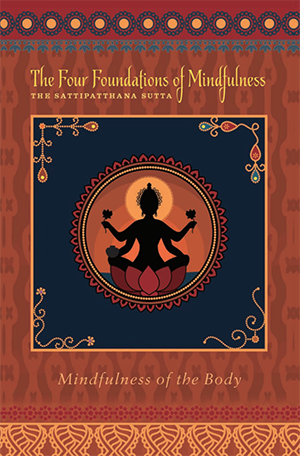For most meditators the first introduction to mindfulness is mindfulness of breathing. This is a wonderful beginning to cultivating awareness of the body. Mindfulness of the breath strengthens our ability to concentrate and at the same time steadies our attention in the present moment.
Over time, attention to the breath helps us to develop a clear and non-reactive awareness that can then be turned to the full range of our human experience and all aspects of our lives.
As one of my teachers, Gil Fronsdal says, “Mindfulness is really an embodied practice. When we practice mindfulness we are learning to live in and through our bodies. Learning to be mindful of our bodily experiences is one of the most beneficial aspects of mindfulness, because when we are in touch with our immediate physical experience we are aware and in the moment.”
When I was much younger and exploring my own spiritual path, I was very much in my head, I was always thinking, analyzing, trying to figure things out. I had a very busy mind and I recognized that this wasn’t the way to a happy life always wrapped up in thought. In fact, with further exploration I found that the times when I felt most alive and free and curious was when I was aware of my body in a physical way and could feel my body, whether this was dancing, swimming, hiking or doing yoga, and yes even crying or having sex. After this realization I started doing more yoga and eventually became a yoga teacher, which definitely took me out of my head and into my body. This allowed me to be curious about my body and my response to it. I’m not advocating everyone become a yoga teacher, because we can all be mindful of our bodies without doing yoga!
When we explore mindfulness of the body we are attending to the body from the inside out. This is different from the way we may habitually attend to the body, thinking about body image and appearance. Instead, we begin to become conscious of what the body is feeling, we start to really be with the felt sense of the body. Let me give you an example: Take a casual sitting posture and bring your awareness to your left hand. Now make a fist, then squeeze and release a few times. Notice the sensations and then notice the thoughts around it – like, dislike, discomfort, maybe even judgment about your hand, or the exercise, confusion, curiosity . . . There’s no right or wrong way here, we let go of any commentary or thoughts about our hand making a fist. We’re just bringing the actual bare experience of what’s happening in the body right now.
What mindfulness of the body brings to our practice eventually is it helps us to relax into the body and often times accept the body. At the same time, when we are present and aware in our bodies we don’t get ‘wound up’ or ‘spin out’ with mental proliferations and buzz out of control.
There are numerous benefits to using mindfulness of the body as our meditation object.
First, when we bring our attention to the body and its sensations we are naturally drawn to the present moment, the here and the now. We are not caught in the past or worried about the future, we’re here. The body is a natural anchor for mindfulness when we pay attention to it. This brings a grounding effect, like settling down to earth. Feeling the weight of the body, even its heaviness brings a counterbalance to the busy mind that is zooming off with ideas, plans, memories. Being mindful of the body acts as a ‘recalibration,’ a centering or a balancing.
Secondly, by becoming familiar with patterns of physical sensations in the body, we can more easily work with them. If our body is in pain and we try to ignore it, resist it, or ruminate on it, we’re trying to live outside physicality. This creates detachment from the body. Our body is our home, it’s our vehicle for this human experience even we aren’t happy with the condition that it’s in. When we make peace with our bodies and accept them as they are (weak, strong, aging, painful, sensual, whatever) then we create a way to explore and accept where we are and bring an understanding that our happiness doesn’t depend on the body being a certain way.
Cultivating mindfulness of the body increases familiarity with the body and how the body responds to our inner and outer lives, to our thoughts, to our emotions and to the events around us. The Buddha taught that the mind and the body are intrinsically linked and unified. When we suppress or ignore our emotional, cognitive and volitional lives, we tend to disconnect from the body. When we distance ourselves from our physical experience, we lose touch with our inner life of emotions and thoughts.
When we awaken in the body through mindfulness we may discover repressed emotions and develop a greater capacity to the world with healthy emotions and more skillful actions. We learn not to respond automatically or unconsciously and begin to have a deeper understanding of the present moment and our reaction to it. This can give us more freedom to choose our response to this life and the world.
Lastly, mindfulness of the body can bring a greater understanding to the cause of tension. When we are mindful of physical sensations it can help us to release any tension. We become able to stay with situations that could be uncomfortable and at the same time we may choose situations or environments that support our well-being.

